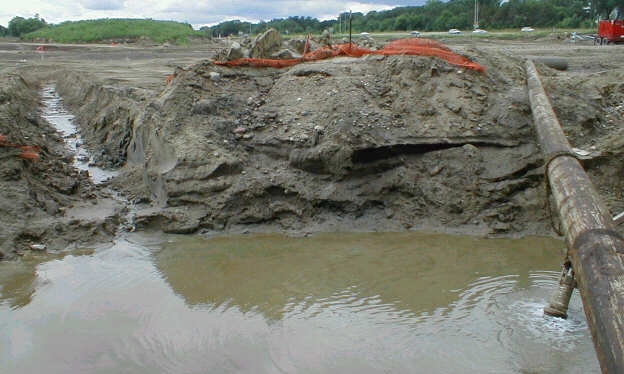|
MnDOT is thwarting a solution by withholding the "tool" to reach a solution-they just "walk away form the table". No issue can be worked out without MnDOT at the table. We are not asking MnDOT to not
build the road. We are simply asking that the road be designed to save
Coldwater Spring. |
|
The ongoing dispute over the Hwy55/62 interchange between MnDOT and the Minnehaha Creek Watershed has taken on a few new twists. Below are pictures of the area in dispute. This is not intended to point you in any direction, it is simply to report on the developments and on the different positions, more so than what has been in the newspapers... MnDOT has redesigned the ponding setup for the interchange. The SW Loop pond that once threatened the Coldwater Spring has been replaced with new ponds that are completely above the water table. So there should be a positive gradient towards the spring. (YEAH!) The drainage tiles under the new road, is what is still in dispute. On MnDOT's side they say they can line the roadway with clay to create a partial boundary from the groundwater, but not completely. They say that it won't be a problem though because very little water makes it's way from the interchange to the Coldwater Spring anyway. As proof they site that 200 gallons per minute (GPM) of groundwater has been removed from the interchange site for weeks and no measurable effect has been seen at the Spring. When they finish the road, 35 to 100 GPM will
be removed on a permanent basis through the drainage tiles under the road.
If 200 GPM is not a problem now, the lower 100GPM won't be in the future
either. Therefor their design for the road that is below the water table
should be OK. Even if there is a problem, MnDOT has said they will fix
it later. However as time moves on with continual dewatering the Spring
Flow On MCWD's side (this is a bit tough, as their last meeting was executive closed door), they say that once the road is in place it won't be redesigned if there is a problem. The money to do it wont be there, so it MUST be built right the first time. The connection between the road and Spring is not well understood, and so MnDOT must do everything it can to minimize impact, including what they say is a 4 to 8 million dollar concrete trough (instead of clay like MnDOT wants) for the road to run below the water table, and keep it isolated from the groundwater. They site a mutually agreed to arbitrators report that concludes a lack of monitoring by MnDOT requires a need for the trough, as the lack of quantitative monitoring means that no one knows for sure what is truly happening with the water, and by what amounts. Therefore total isolation of the road from the groundwater is necessary, to say you have no impact to the spring for sure. Hence the concrete trough. MnDOT says the trough will cost 7 to 10 million, and is too expensive. Also, the trough will need a bigger hole to be dug than the current road design and will require even more temporary dewatering than what is currently being done. Though once completed it will not require dewatering at all. The trough will need to be weighted down with pig iron so it doesn't float out of the ground (and all the water). The latest design for the trough has now been designed to stay completely above the bedrock. MnDOT said the trough would be built solely to say no impact to groundwater at all, not no impact to the Spring, because MnDOT believes the current design does not impact the Spring. Further MnDOT stated that the current bypass for the road is too dangerous for winter driving, so a new bypass will be built. MCWD says they are worried that MnDOT could use the time to try and repeal the Coldwater Law that protects the spring. Then even if the road does prove to impact Coldwater Spring, MnDOT won't need to do anything about it. Also with time, as the ground dries out from the dewatering there may be a delayed affect on the Spring. Immediate impact may not be seen. MnDOT has now confirmed that they intend to go to the legislator and ask that the law be loosed so they have more freedom to build the road. MnDOT did say at a Lower Mn River Watershed
meeting that they are doing all this for the airport overflight rights.
The interchange, and the LRT line that will be built over the interchange,
must be below the level of airplanes taking off from the crosswinds runway.
MnDOT has confirmed this |
| This is the Hwy 55/62 interchange that is in dispute. It's about 25 feet below the natural lay of the land. The top of the bridge is near the natural height as seen by the nearby trees. Coldwater Spring is just behind those trees. You can see the groundwater gathering at the bottom. |

| This is the groundwater running into a capture pool at the bottom of the interchange. |
| Then the groundwater is pumped out of the interchange. All pumping told, about 250gpm is currently pumped out of the interchange. |